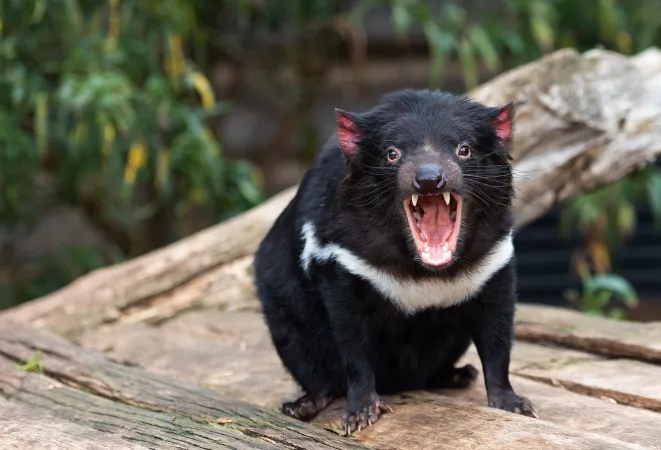Chinnar Wildlife Sanctuary Travel Guide
Chinnar Wildlife Sanctuary, located in the Idukki district of Kerala, India, is a haven for nature lovers and wildlife enthusiasts. Established in 1984, the sanctuary is known for its diverse flora and fauna, including rare species like the grizzled giant squirrel and the star tortoise. The sanctuary's rugged terrain, dry deciduous forests, and unique ecosystem make it a popular destination for eco-tourism.Top Attractions in Chinnar Wildlife Sanctuary
1. Trekking to the Chinnar Watchtower 2. Marayoor Sandalwood Forests 3. Thoovanam Waterfalls 4. Ancient Dolmens 5. Wildlife Safari 6. Vasyappara WaterfallChinnar Wildlife Sanctuary is Famous for
Its rich biodiversity and the opportunity to spot endangered species in their natural habitat.Top Attractions in Chinnar Wildlife Sanctuary
- Trekking to the Chinnar Watchtower - Marayoor Sandalwood Forests - Thoovanam Waterfalls - Ancient Dolmens - Wildlife Safari - Vasyappara WaterfallWhat's Great about Travelling to Chinnar Wildlife Sanctuary?
- Perfect for nature lovers and wildlife enthusiasts - Offers unique eco-tourism experiences - Ideal for photography enthusiastsWhat's Not So Great about Travelling to Chinnar Wildlife Sanctuary?
- Limited accommodation options - Remote location may require careful planning - Limited dining optionsTravel Tips for Chinnar Wildlife Sanctuary
- Obtain necessary permits for entry - Wear comfortable clothing and sturdy shoes for trekking - Carry sufficient water and snacks - Respect wildlife and follow park rulesImportant Chinnar Wildlife Sanctuary trip information
- Ideal Duration: 2-3 days to explore the sanctuary
- Best Time to Visit: November to March for pleasant weather
- Nearby Airports and Railway Stations: Coimbatore International Airport and Aluva Railway Station
FAQ's on Chinnar Wildlife Sanctuary
Q1: What is the best time to visit Chinnar Wildlife Sanctuary?
The best time to visit Chinnar Wildlife Sanctuary is from September to March when the weather is pleasant and wildlife sightings are more common. Avoid the monsoon season from June to August due to heavy rainfall. The sanctuary also hosts various events and festivals during the winter months, offering a unique experience for visitors.
Q2: Do I need a visa to travel to Chinnar Wildlife Sanctuary?
As Chinnar Wildlife Sanctuary is located in India, tourists will need an Indian visa to visit. Make sure to check the visa requirements based on your nationality and apply for the appropriate visa before your trip. Some nationalities may be eligible for e-visas or visa on arrival, but it is essential to confirm this beforehand.
Q3: What are the must-visit attractions in Chinnar Wildlife Sanctuary?
Chinnar Wildlife Sanctuary is known for its diverse flora and fauna, offering opportunities for wildlife safaris, trekking, and bird watching. Must-visit attractions include the Chinnar River, Thoovanam Waterfalls, Marayoor Dolmens, and the sandalwood forest. The sanctuary is home to various endangered species like the grizzled giant squirrel and the star tortoise.
Q4: Is Chinnar Wildlife Sanctuary a safe place to travel?
Chinnar Wildlife Sanctuary is generally safe for tourists, but it is essential to follow guidelines provided by authorities. Avoid venturing into restricted areas, respect the wildlife, and stay cautious during treks or safaris. It is advisable to hire local guides for exploration and to be aware of any specific safety instructions given by the sanctuary officials.
Q5: What is the local currency in Chinnar Wildlife Sanctuary and can I use credit cards?
The local currency in Chinnar Wildlife Sanctuary is the Indian Rupee (INR). While credit cards may be accepted in some hotels or larger establishments, it is recommended to carry cash for transactions in smaller shops or local markets. ATMs are available in nearby towns like Marayoor for easy access to cash.
Q6: What is the local cuisine like in Chinnar Wildlife Sanctuary?
The local cuisine in Chinnar Wildlife Sanctuary offers a blend of South Indian flavors with specialties like dosa, idli, sambar, and traditional Kerala dishes. Visitors can also enjoy fresh fruits, coconut-based curries, and seafood delicacies. Vegetarian and non-vegetarian options are readily available, catering to different dietary preferences.
Q7: What transportation options are available in Chinnar Wildlife Sanctuary?
Transportation options in Chinnar Wildlife Sanctuary include buses, taxis, and private cars for getting around the area. Public buses connect the sanctuary to nearby towns, while taxis or rental cars can be hired for more flexibility in exploring the region. Walking or cycling are also popular ways to experience the sanctuary up close.
Q8: Are there any cultural norms or etiquette I should be aware of when visiting Chinnar Wildlife Sanctuary?
When visiting Chinnar Wildlife Sanctuary, it is important to respect local customs and traditions. Dress modestly, especially when visiting religious sites or interacting with local communities. Avoid littering in the sanctuary and follow guidelines for wildlife viewing to ensure minimal impact on the environment. Learning a few basic greetings or phrases in the local language can also enhance your cultural experience.
Q9: I am a travel agent. How can I buy travel leads of Chinnar Wildlife Sanctuary?
Register yourself as a travel agent at agents.tripclap.com and then you can buy travel leads to Chinnar Wildlife Sanctuary once your account is approved. For more details contact our support team at +91-8069186564 or support@tripclap.com

